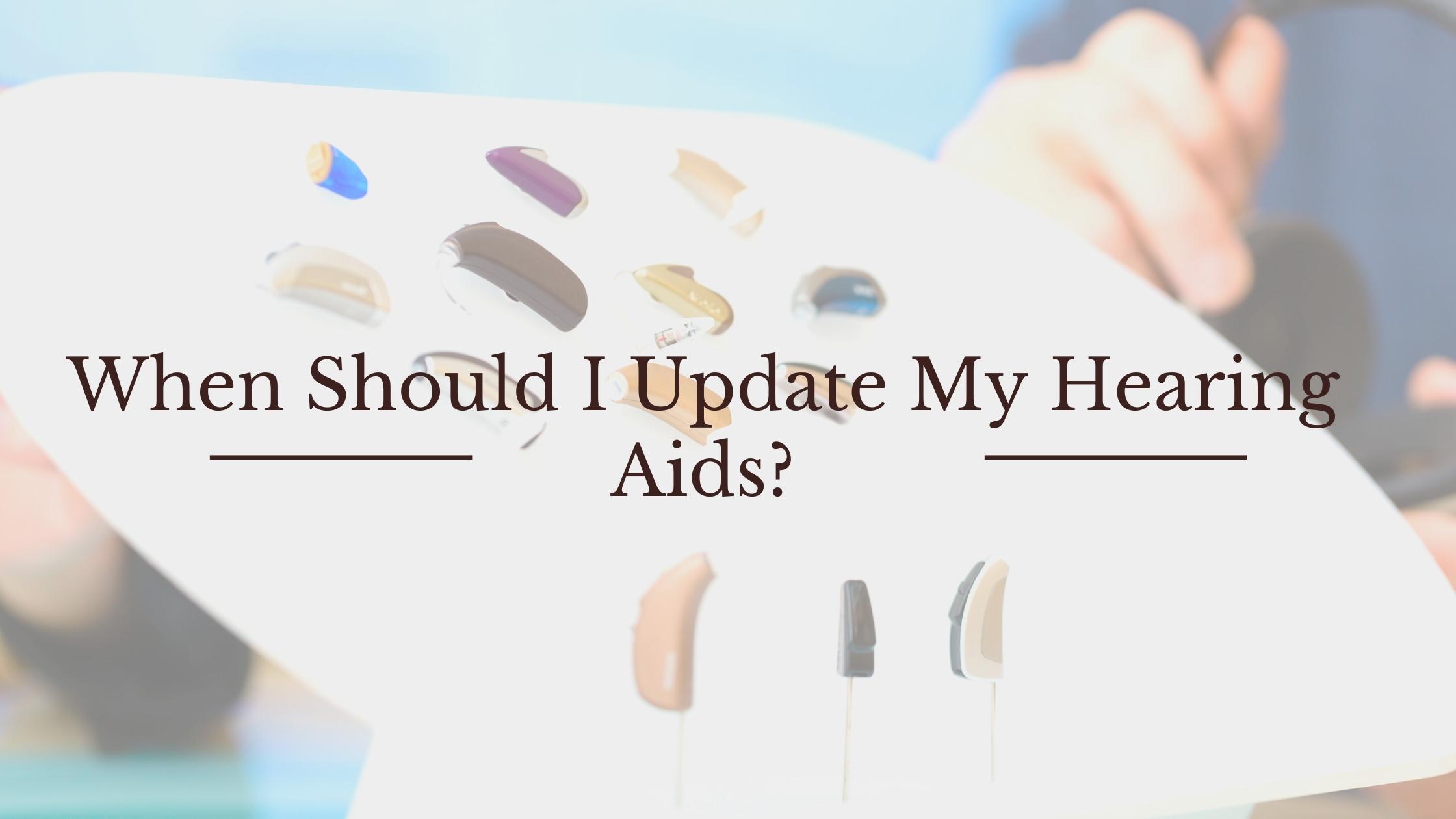
- A Guide to Different Hearing Aid Styles - May 6, 2025
- What is the Lifespan of Hearing Aid Batteries? - April 27, 2025
- Understanding the Different Types of Assistive Listening Technology - April 15, 2025
Hearing aids are an essential tool used by millions of people to comfortably navigate daily life. They are highly durable devices that can last up to 7 years. The lifespan of hearing aids depends on a few factors including how well they are maintained, the impact of daily wear and tear, and the specific type of device you have. Knowing when to update your hearing aids is an important way to ensure that your hearing needs are always and optimally being met. Here are a few considerations to think about when assessing if you should opt for new hearing aids:
- Hearing aids reach the end of their lifespan. Like all electronic devices, hearing aids have a finite lifespan. Because they are worn and used daily, they are impacted by this daily wear and tear – moisture, earwax accumulation, sweat, etc. This is why it is important to have a cleaning routine that best maintains your device which keeps them operating smoothly for as long as they can. Eventually, hearing aids will reach the end of their lifespan requiring you to get a new device. But how do you know when this is? Common signs that hearing aids have reached the end of their lifespan include:
- battery lifespan is short and you find yourself replacing batteries often.
- you experience feedback noise which can include buzzing or whistling-like noises.
- hearing aid turns off sporadically
- malfunctions are frequent
You are an expert in your hearing aids and how they work so you will likely notice changes that indicate your device isn’t working as well. Experiencing these issues regularly may mean it’s time for new hearing aids.
- Your hearing needs to change. What your hearing loss looks like can change over time. Hearing loss ranges from moderate to severe and your impairment can shift which means your hearing needs can change. This is why it is important to have your hearing assessed yearly which is a great way to track any changes and ensure that your device is meeting your hearing needs. If your hearing loss changes then you may need a new hearing aid that is better suited for the specifics of your hearing impairment. There are various types of hearing aids that are designed for specific degrees of hearing loss.
- Lifestyle factors change. A major consideration that helps identify the best hearing aid for you is lifestyle factors. This includes what your social life looks like, your level of engagement with others, your work-life, the type of climate you live in, hobbies, etc. These factors reveal the types of environments you regularly navigate and what your hearing needs are in these settings. This helps narrow in on the features and technologies that could best maximize your hearing while in your usual environments and while participating in the activities that you usually engage in. So if these factors change, it could be time to also update your hearing aids. This could include moving to a different climate, getting a new job, taking up new interests and activities, etc.
- Want to upgrade technology. Hearing aids continue to evolve as technology expands. There is a wide range of features that today’s hearing aids are equipped with which are designed to deliver enhanced sound quality, improve user experience, and make hearing seamless. Hearing aid manufacturers continue to update hearing aid models and produce new devices that are savvier and more advanced, offering features including:
- Wireless connectivity: using Bluetooth technology, hearing aids can wirelessly connect to other electronic devices and stream audio directly.
- Digital noise reduction: this separates speech from background noise, reducing distracting sounds which enhance sound quality.
- Voice recognition: this feature identifies the wearer’s voice from other types of speech and sound; and presents it back more naturally.
- Tinnitus masking features: tinnitus is one of the most common features of hearing loss. This feature is designed to mask tinnitus, alleviating its sound and impact.
- Apps: many of today’s digital hearing aids also come with an app that you can download onto your smartphone or iPad. This allows users to control settings from the app.
If you are interested in these features and other hearing aid technologies, you may want to think about getting a new hearing aid. At Beverly Hills Hearing Center we work with a range of hearing aid manufacturers and use our expertise to recommend the best hearing aid for you. Contact us to learn more!
